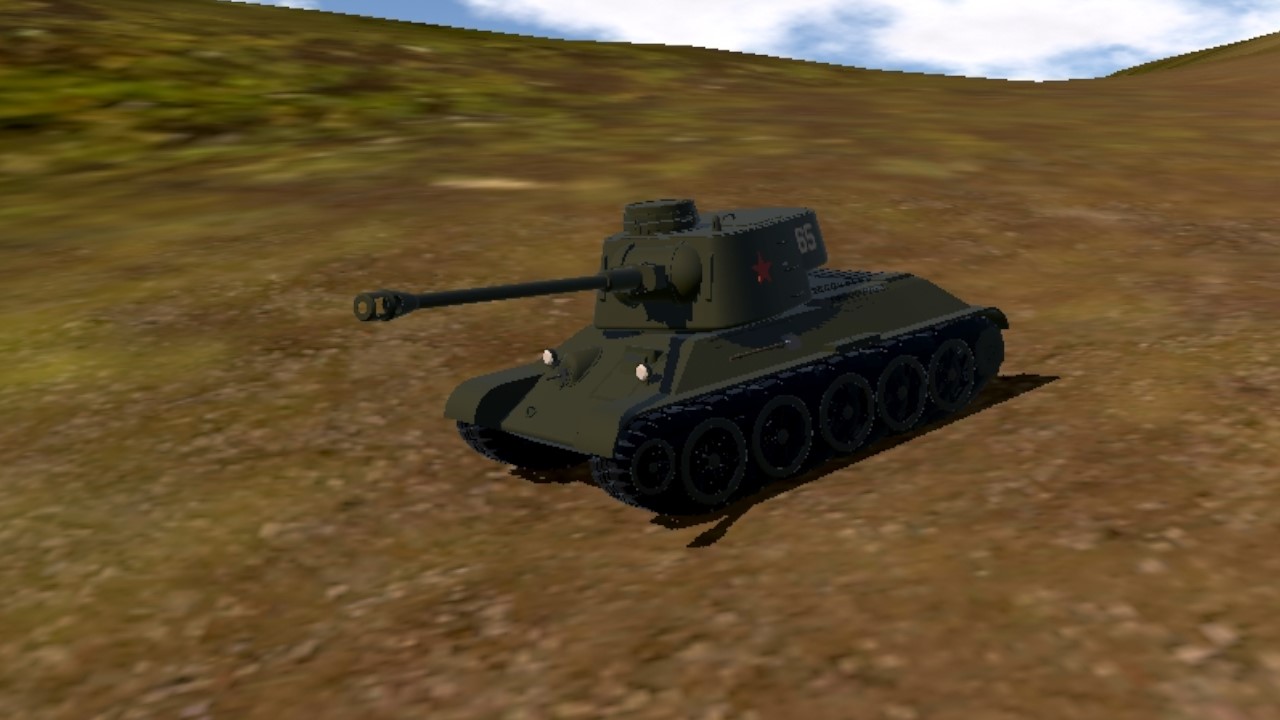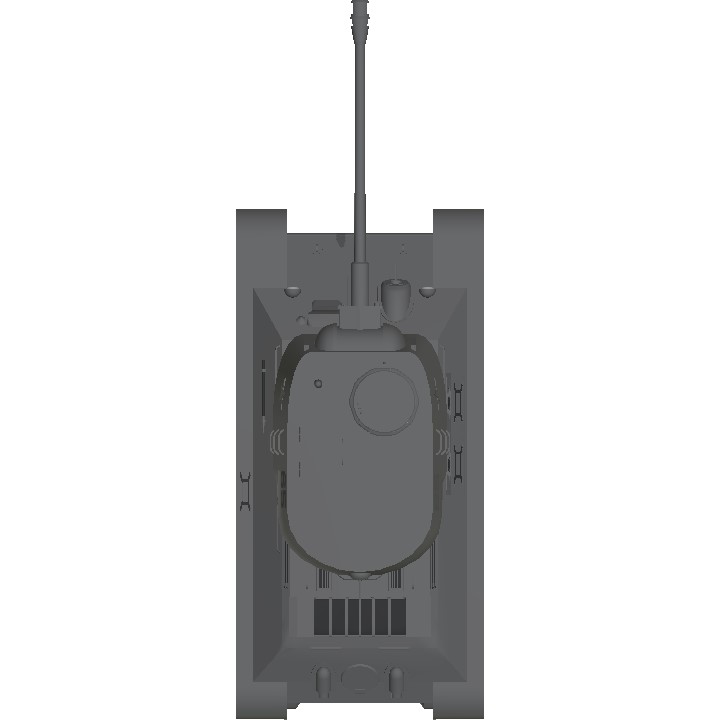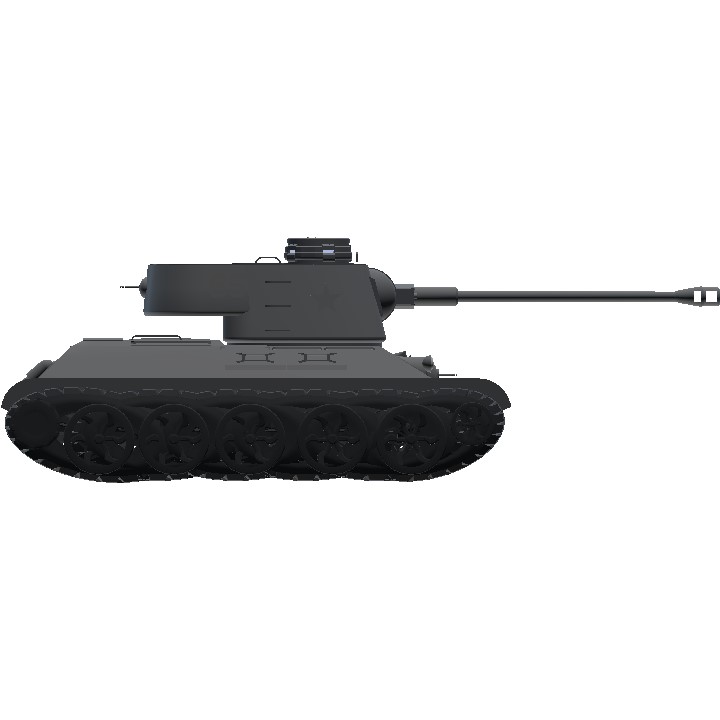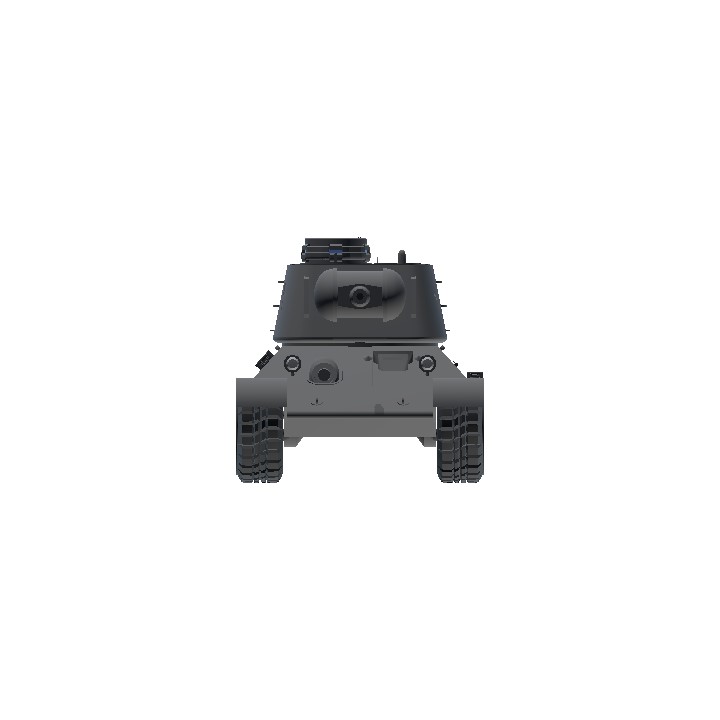Main description
The KVT-34-76 is a experimental Soviet medium tank that combines the KV-1C heavy tank turret with the chassis of a T-34-57, creating a hybrid with enhanced firepower and armor. Developed in the latter years of World War II, this design was intended to field a tank that could bridge the gap between the mobility of medium tanks and the armor protection of heavy tanks.
The KVT-34-76’s mission was to engage German tanks, anti-tank guns, and fortified positions with a balance of speed, armor, and the 76.2mm gun’s firepower. Although it was not mass-produced, the KVT-34-76 is remembered as a unique attempt to maximize the effectiveness of Soviet armor using components from existing tank platforms.
Design Features
The KVT-34-76 utilized the KV-1C’s turret, which was heavier and better armored than the standard T-34 turret, making it more resistant to anti-tank fire. Armed with the 76.2mm F-34 gun, the turret offered a balance of penetration and rate of fire suitable for the mid- to late-war period. The larger turret provided improved crew protection, and the turret ring had to be slightly modified to mount it onto the T-34-57’s chassis.
Chassis and Mobility
The chassis of the KVT-34-76 was based on the T-34-57 model, which had been developed for high-velocity 57mm anti-tank gun installations. While this chassis was fast and maneuverable, it struggled to bear the weight of the heavier KV-1C turret, which strained the suspension and reduced its top speed compared to the standard T-34. The KVT-34-76 retained the reliable V-2-34 diesel engine, which provided sufficient power but limited its operational range and mobility in rough terrain.
Armor Protection
The heavy turret significantly increased the KVT-34-76’s frontal protection, giving it a better chance of withstanding hits from German anti-tank guns. However, the T-34 chassis’ armor was unchanged, leaving its sides vulnerable and making positioning critical for survival in battle.
Crew Layout
The tank had a standard T-34 crew configuration of four members: commander, gunner, loader, and driver. However, the turret offered slightly more room than the standard T-34 turret, providing some ease of operation for the crew.
Development History
The KVT-34-76 project was born out of necessity in 1943 when Soviet commanders sought a medium tank with more robust frontal armor and firepower to counter increasingly potent German tanks and fortified positions. With the heavy KV series suffering from mobility issues and high production costs, designers explored hybrid solutions that could be produced more quickly by combining existing models.
The KV-1C turret, originally fitted to KV-1 heavy tanks, was selected due to its familiarity and existing supply lines. The T-34-57 chassis, chosen for its improved suspension and compatibility, was modified to accommodate the heavier turret, creating a rare mix of components from different tank classes.
While the design demonstrated promise, testing revealed that the added weight put a strain on the T-34 chassis, particularly its suspension and engine. This led to slower speeds, more frequent mechanical breakdowns, and difficulties in soft or rough terrain. Additionally, the turret’s added weight reduced the vehicle’s fuel efficiency, limiting its operational range.
Due to these challenges, the KVT-34-76 project was ultimately abandoned in favor of advancing production of the standard T-34-85, which provided similar firepower and armor improvements without the mobility compromises.
Operational Testing and Performance
In limited field trials, the KVT-34-76 proved itself effective in head-on engagements with enemy armor, particularly at medium ranges where its reinforced turret armor could absorb hits from lighter anti-tank weapons. However, its lack of side protection and reduced mobility limited its effectiveness in flanking maneuvers and high-mobility tactics typical of the T-34 platform.
The hybrid was well-suited to defensive roles or direct assault on fortified positions, where it could utilize its armor and firepower, but its performance fell short of expectations for a front-line medium tank. Commanders ultimately concluded that the T-34-85 offered a more balanced and adaptable solution.
Legacy and Influence
Although never mass-produced, the KVT-34-76 experiment demonstrated the potential—and limitations—of hybrid tank designs. It highlighted the challenges of combining heavy components with medium platforms and influenced future Soviet tank development by emphasizing the importance of matching firepower and armor with mobility.
The KVT-34-76 is often remembered as a unique piece of Soviet engineering and a testament to the Red Army’s willingness to innovate during one of history's most challenging armored conflicts.
Control/credits in instructions
Have fun!
Specifications
Spotlights
- SILVERPANZER 5 months ago
General Characteristics
- Created On Android
- Wingspan 10.3ft (3.1m)
- Length 29.3ft (8.9m)
- Height 10.0ft (3.0m)
- Empty Weight 72,445lbs (32,860kg)
- Loaded Weight 79,019lbs (35,842kg)
Performance
- Wing Loading N/A
- Wing Area 0.0ft2 (0.0m2)
- Drag Points 132
Parts
- Number of Parts 422
- Control Surfaces 0
- Performance Cost 1,699





Ayooo first
@Sakorsky I'll work on it.
@Zero0Two2 no I got a better one, search Panzer V/IV.
@Sakorsky already trier that, didn't fit well
However I could do tiger 1 turret on panther chassis
Т-34 & КВ-5 👍🏿
Tiger I hull with Panther turret next
@RyooSensei free pin